There’s something deeply comforting about the ritual of rolling cabbage rolls. It’s not just about stuffing a leaf—it’s about slowing down, using your hands, and making something honest and nourishing. Whether you’re brand new to this or looking to perfect your technique, this guide walks you through every warm, wonderful detail of how to master rolling cabbage rolls at home. From softening the leaves to sealing them tight, every step brings you closer to a dish that’s been passed down through kitchens across generations.
Print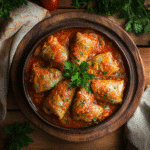
Rolling Cabbage Rolls Made Simple: A Heartfelt, Easy Guide for Home Cooks
- Total Time: 1 hour 20 minutes
- Yield: 4 servings 1x
Description
A simple and traditional recipe for rolling cabbage rolls with meat and rice filling, simmered in tomato sauce.
Ingredients
1 large green cabbage
1 lb ground beef or turkeyn1 cup cooked white rice
1 onion, finely chopped
2 cloves garlic, minced
1 egg
Salt and pepper to taste
1 tsp paprika
2 cups tomato sauce
1 tbsp olive oil
Instructions
Boil or freeze cabbage leaves until soft.
Trim the thick vein from each leaf.
Mix meat, rice, onion, garlic, egg, salt, pepper, and paprika.
Place filling on cabbage leaf and roll tightly.
Layer rolls seam-side down in baking dish.
Pour tomato sauce over the rolls.
Cover with foil and bake at 350°F for 60–75 minutes.
Let cool before serving.
Notes
Use toothpicks or place rolls tightly to keep them intact.
Add lemon juice or sugar to your sauce for balance.
- Prep Time: 20 minutes
- Cook Time: 1 hour
- Category: Dinner
- Method: Baking
- Cuisine: Eastern European
Nutrition
- Serving Size: 2 rolls
- Calories: 420
- Sugar: 6g
- Sodium: 480mg
- Fat: 20g
- Saturated Fat: 7g
- Unsaturated Fat: 11g
- Trans Fat: 0g
- Carbohydrates: 35g
- Fiber: 4g
- Protein: 24g
- Cholesterol: 85mg
Keywords: rolling cabbage rolls, how to make cabbage rolls, cabbage rolls recipe
Table of Contents
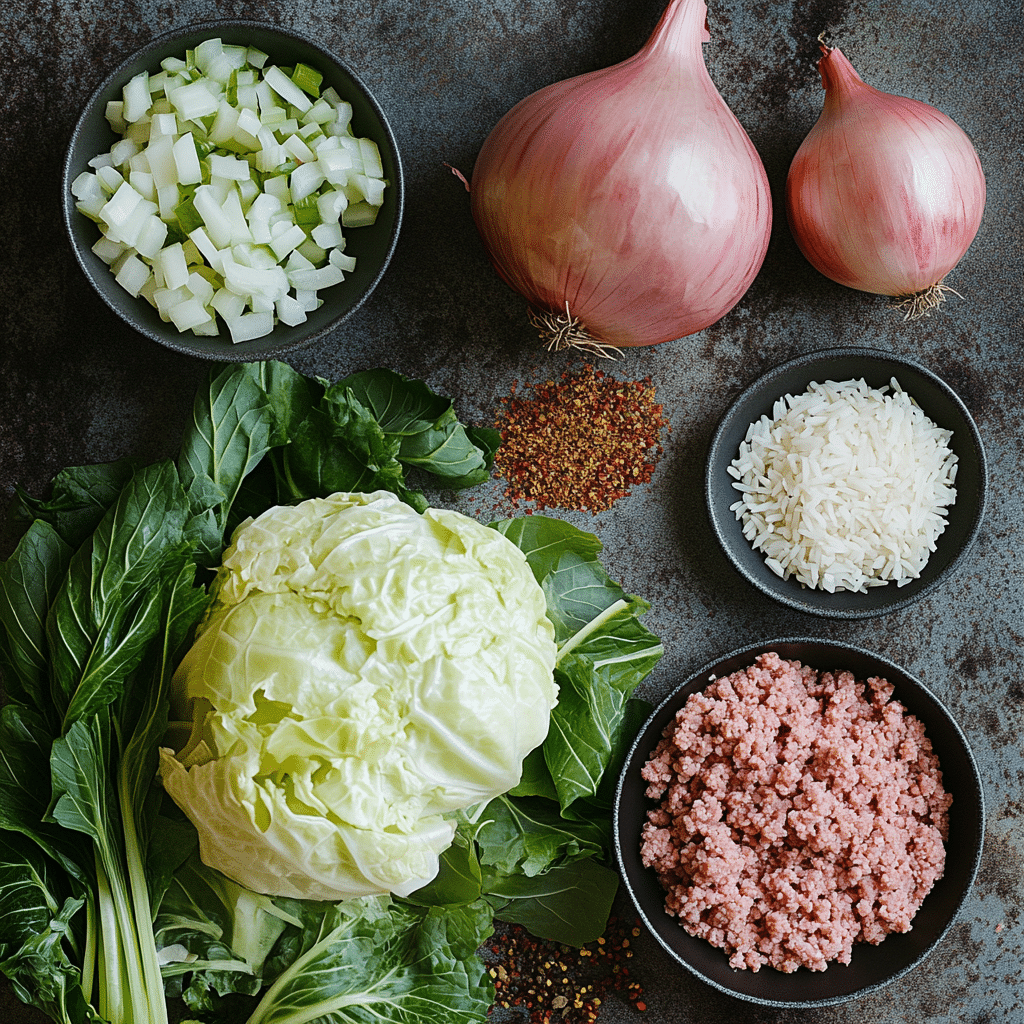
The Story & Intro
Why rolling cabbage rolls means more than just dinner
I still remember the first time I saw someone rolling cabbage rolls. My mom stood at the kitchen counter with a steaming head of cabbage and a bowl of seasoned meat and rice. She didn’t rush. She just rolled, tucked, and layered each one like she was wrapping a tiny gift. It didn’t matter how many she made—there was always a rhythm to it, a sense of calm that filled the kitchen. That’s the magic of rolling cabbage rolls. It’s not just a cooking step; it’s an act of care.
Growing up, Sundays were for comfort food, and rolling cabbage rolls was part of that ritual. We’d boil the cabbage, prep the filling, and cover the counter in clean dish towels to lay out the leaves. Sometimes I’d mess up a few—overstuffed, under-tucked, torn. My mom would smile and fix them gently, never making me feel like I got it wrong. She always said, “Each one is different, like people. Doesn’t mean it won’t taste good.”
Over time, rolling cabbage rolls became something I did for myself. After long weeks or rainy days, I’d find myself boiling cabbage and breathing in that tomatoey scent while dinner simmered. Rolling cabbage rolls brought me back to center. These little bundles don’t need to be fancy—they just need to be made with patience.
Now, I make them for my family, and the tradition keeps rolling. Everyone gets involved. My kids think it’s fun to make their own “cabbage tacos,” and my partner insists on taste-testing the filling (repeatedly). Rolling cabbage rolls might sound old-fashioned, but they’ve never gone out of style in my house. It’s one of the few meals that feels like both memory and nourishment in the same bite.
If you’re just getting started with rolling cabbage rolls, don’t stress. It’s okay if the first few cabbage rolls aren’t perfect—every tradition starts with a messy masterpiece. The goal isn’t perfection—it’s connection. And once you get the hang of it, you’ll find yourself reaching for cabbage every time you want to make something that feels like home.
Pair these with comfort classics like classic meatballs and gravy or a Mediterranean side like Turkish stuffed peppers to round out the meal. These flavors all work beautifully together, and they’ll make your table feel as welcoming as your kitchen.
Rolling Cabbage Rolls: A Global Journey Wrapped in Leaves
Rolling cabbage rolls might feel like a family-specific tradition, but it’s actually a global comfort food. Almost every culture has its own version, each one carrying the same core idea: a savory filling wrapped in tender cabbage and cooked slowly to bring out deep, nostalgic flavor.
In Turkey, they’re called lahana sarması—cabbage rolls filled with rice, pine nuts, and herbs. In Poland, they’re called gołąbki—tender cabbage leaves wrapped around a savory mix of meat and rice, then baked to perfection in a rich tomato sauce. Ukraine, Romania, Russia, Syria—they all have their own take. Rolling cabbage rolls is something you’ll find in kitchens from the Balkans to the Middle East, and each version brings its own history to the table.
At my house, our version is somewhere between Eastern European and Sicilian-American. We stick with beef, rice, garlic, and tomato sauce, but I’ve played with the flavors over time. Sometimes I toss in a hint of cinnamon or switch things up with ground turkey—it keeps the tradition fresh. Once, I even used quinoa and chickpeas, just to see what would happen. That’s the beauty of rolling cabbage rolls—they’re flexible, forgiving, and open to interpretation.
For More Recipes :
Prepping for Perfect Rolls
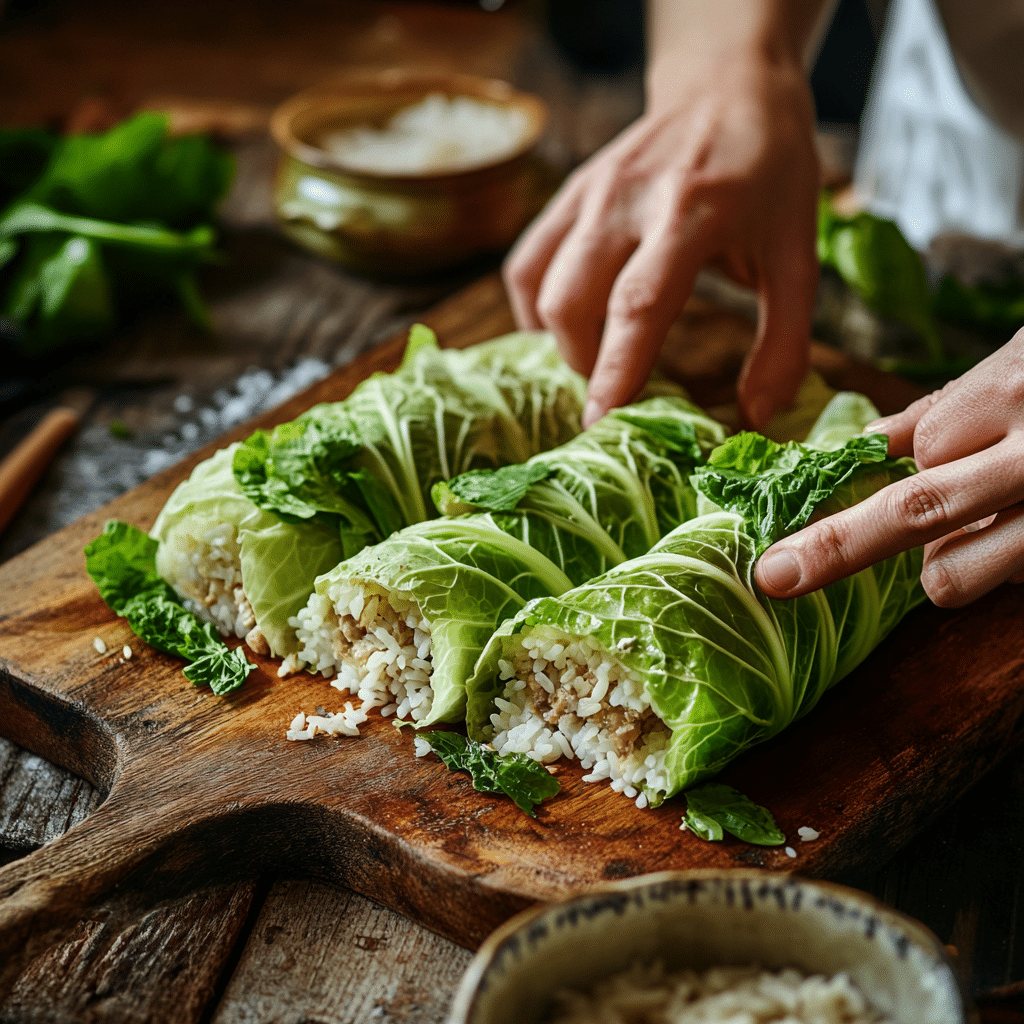
Softening cabbage leaves without a mess
Before you even think about rolling cabbage rolls, you’ve got to start with the leaves. If the cabbage isn’t softened just right, you’ll end up with cracked rolls, torn wrappers, and a lot of frustration. The good news? Once you learn how to prep your cabbage properly, the whole process becomes smoother and even kind of relaxing.
There are three main ways to soften cabbage leaves. Each works well—it really depends on your schedule and what you’ve got on hand.
- Boiling: This is the traditional method. Core your cabbage and drop it whole into a large pot of boiling water. As the leaves soften, peel them off one by one with tongs. It’s easy, but you do need to watch closely so they don’t get mushy.
- Freezing: A hands-off option. Just pop the whole cabbage in the freezer overnight, then let it thaw. The ice breaks down the structure of the leaves, making them soft and rollable without cooking.
- Microwaving: If you’re short on time, this trick is gold. Remove the core, place the head in a large bowl with about an inch of water, cover, and microwave for 8 to 10 minutes. Let it rest a bit before peeling off the leaves.
No matter how you prep them, your cabbage leaves should be pliable and bend easily without snapping. That’s when you’ll know they’re ready for rolling cabbage rolls without a fight.
While your cabbage is cooling, it’s the perfect time to plan your sides. A bowl of easy rice pilaf is always a great match, or you can prep a fresh salad to balance out the richness of the rolls.
The heart of the roll: filling choices that work
Once your leaves are ready, it’s time to focus on the filling—the soul of any good cabbage roll. Classic versions use ground meat, rice, and a few simple spices. But just like with any beloved dish, there’s room to make it your own.
Here are some tried-and-true filling ideas to get you started:
- Traditional: A mix of ground beef or pork, cooked white rice, sautéed onions, garlic, salt, pepper, and a splash of tomato sauce to hold it all together.
- Vegetarian: Cooked lentils or chickpeas, mushrooms, rice, caramelized onions, and chopped fresh parsley or mint.
- Turkish-inspired: Rice, pine nuts, currants, dill, cinnamon, and olive oil. Light, aromatic, and 100% meat-free.
The key is to strike a balance. Your filling should be moist but not wet, flavorful without being overpowering. A small test—squeeze a spoonful in your hand. If it sticks together but doesn’t drip, you’re good to go.
I’ve also found that rolling cabbage rolls becomes even more rewarding when I use leftovers creatively. Got some extra one-pot ground beef from another night? Mix it into your filling. This dish doesn’t have to be fancy to be delicious—it just has to come from the heart.
And don’t forget to taste your mixture before rolling (unless it has raw meat, of course). Season now so your cabbage rolls don’t taste flat later. A little paprika, a pinch of cinnamon, a dash of lemon juice—they can all bring a quiet magic to the mix.
Rolling cabbage rolls really begins with the prep. And when that part is done right, everything else just clicks into place.
Rolling Cabbage Rolls Like a Pro
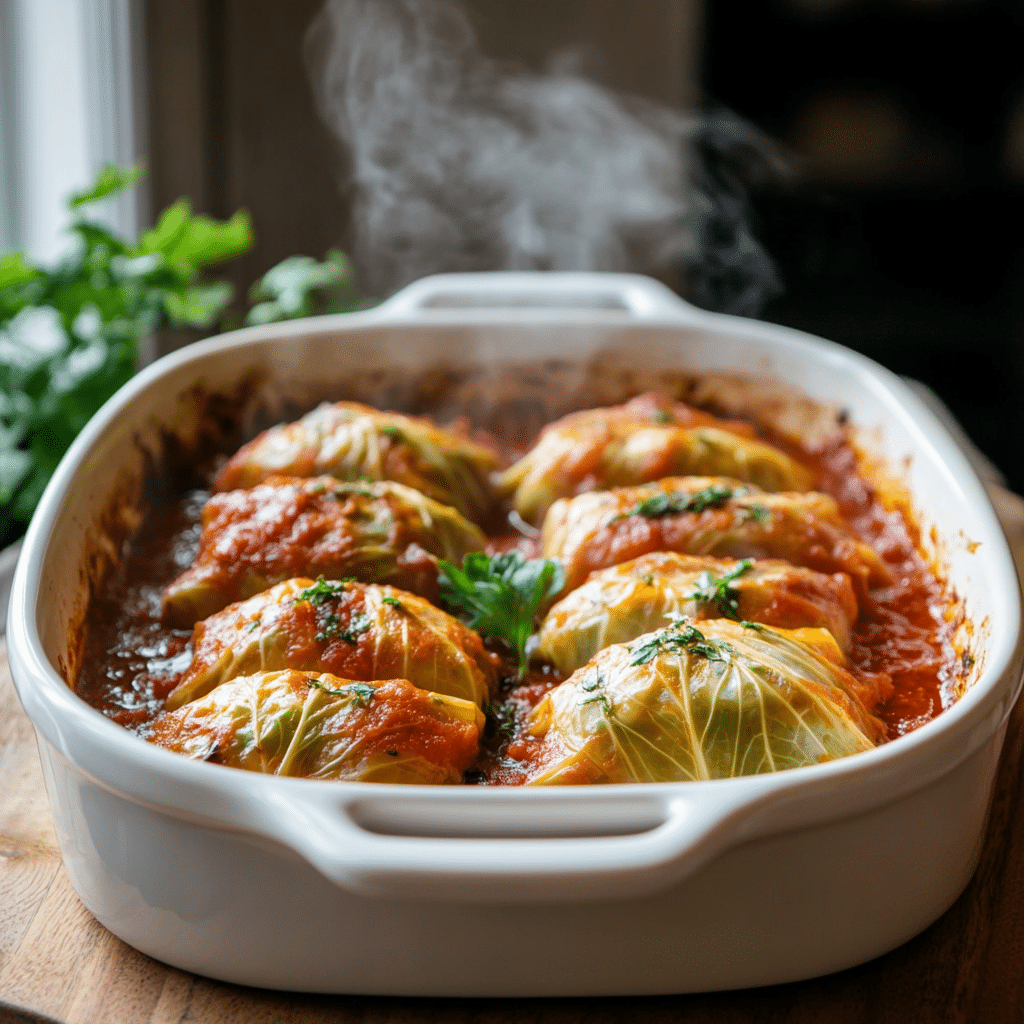
What is the best way to roll cabbage rolls?
If you’re new to rolling cabbage rolls, don’t worry—it’s easier than it looks. Like folding a burrito or wrapping a present, it just takes a little practice. The trick is to roll them tight enough to stay together, but not so tight that the cabbage splits.
Here’s the method I use every single time:
- Trim the vein: Lay the cabbage leaf flat and carefully slice down the thick center vein to make it more flexible.
- Add filling: Place 2 to 3 tablespoons of filling near the base of the leaf (the thicker end).
- Tuck and roll: Fold in the sides, then roll from the base to the top like a jelly roll. You’ll want it snug, but not bulging.
- Seal the deal: If a leaf tears, don’t toss it—just double wrap it with a second one or place the torn side down in the pan.
When rolling cabbage rolls, consistency helps with even cooking. Try to keep each roll about the same size, so they all finish at the same time. If you’re making a big batch, line them up seam-side down in a baking dish to help keep everything secure while cooking.
Another tip? Don’t overstuff. The rice will expand as it cooks, and too much filling can cause the rolls to burst open. When I’m teaching friends or my kids how to roll, I always say: “If you think it’s too much, it probably is.”
Once you’ve got your pan full of these little bundles, all tucked in tight, it’s time to bathe them in sauce and let the oven (or slow cooker) do the rest.
For cozy weekend cooking, these rolls pair beautifully with other slow cooker favorites, especially when you want the kitchen to smell amazing all day.
How long do you cook a cabbage roll for?
Cooking time depends on your method, but no matter how you do it, rolling cabbage rolls should lead to tender leaves and fully cooked filling soaked in rich sauce.
Here are the most common methods:
| Method | Temperature | Time | Notes |
|---|---|---|---|
| Oven-Baked | 350°F | 60–75 minutes | Covered with foil or lid |
| Slow Cooker | Low setting | 6–8 hours | Great for make-ahead meals |
| Stovetop | Low simmer | 60–90 minutes | Use a heavy pot with a lid |
In all cases, pour tomato sauce over the rolls before cooking. You can use a simple blend of crushed tomatoes, garlic, and a splash of lemon or vinegar for tang. Some folks even mix in a spoonful of brown sugar for sweetness—it’s up to you.
When the rolls are finished, the cabbage should be fork-tender and the sauce bubbling. You’ll want to let them rest for at least 10 minutes before serving. This helps everything settle and makes serving easier, too.
Rolling cabbage rolls does take a little time, but the result is worth it—especially when paired with other comfort dishes like those from our Sunday dinner ideas collection.
And trust me, once you pull them from the oven, smelling of garlic, tomato, and warm spices, you’ll know it was time well spent.
Culture, Variations & Storage
Are cabbage rolls Turkish? What country are cabbage rolls from?
It’s a common question when people start rolling cabbage rolls for the first time: where did these even come from? The answer is, there’s no single origin—cabbage rolls are truly a global comfort food.
In Turkey, they’re called lahana sarması, and they’re typically rolled with vine or cabbage leaves. Turkish versions often skip the meat and use a fragrant blend of rice, pine nuts, currants, cinnamon, and fresh herbs. Served cold with a squeeze of lemon, they’re light and bright compared to heavier tomato-sauced rolls.
But Turkey isn’t alone. Rolling cabbage rolls is a tradition that crosses borders:
- Poland: Known as gołąbki, these are filled with ground meat and rice, then baked in tomato sauce.
- Ukraine/Russia: Called holubtsi, usually made for holidays or large gatherings.
- Romania: Their sarmale are rolled tightly and slow-cooked in sauerkraut or fresh cabbage.
- Middle East: You’ll find vegetarian versions with lentils and plenty of lemon.
Each version has its own story, but they all share the act of wrapping love into cabbage and feeding people from the heart.
So, are cabbage rolls Turkish? Yes—but also Polish, Ukrainian, Romanian, Lebanese, and beyond. That’s what makes rolling cabbage rolls so special: no matter where you’re from, there’s a version that likely feels like home.
How to store, freeze, and reheat cabbage rolls
One of the best things about rolling cabbage rolls is that they store beautifully. Make a double batch, and you’ve got dinner covered for days—or even weeks.
Here’s how I keep mine tasting fresh:
- Refrigerator: Once cooled, store leftover cabbage rolls in an airtight container. They’ll keep for up to 4 days.
- Freezer: To freeze, place cooked (or uncooked) rolls on a tray lined with parchment, freeze individually, then transfer to a freezer bag. This prevents sticking and keeps their shape. They’ll last up to 3 months.
- Reheating: If frozen, thaw overnight in the fridge. Reheat in a covered dish in the oven at 325°F for about 25 minutes. For quick meals, the microwave works too—just cover with a damp paper towel to keep moisture in.
I like freezing mine in small portions for easy weeknight dinners. There’s nothing better than coming home, grabbing a few frozen cabbage rolls, and having a soulful, homemade meal in under half an hour.
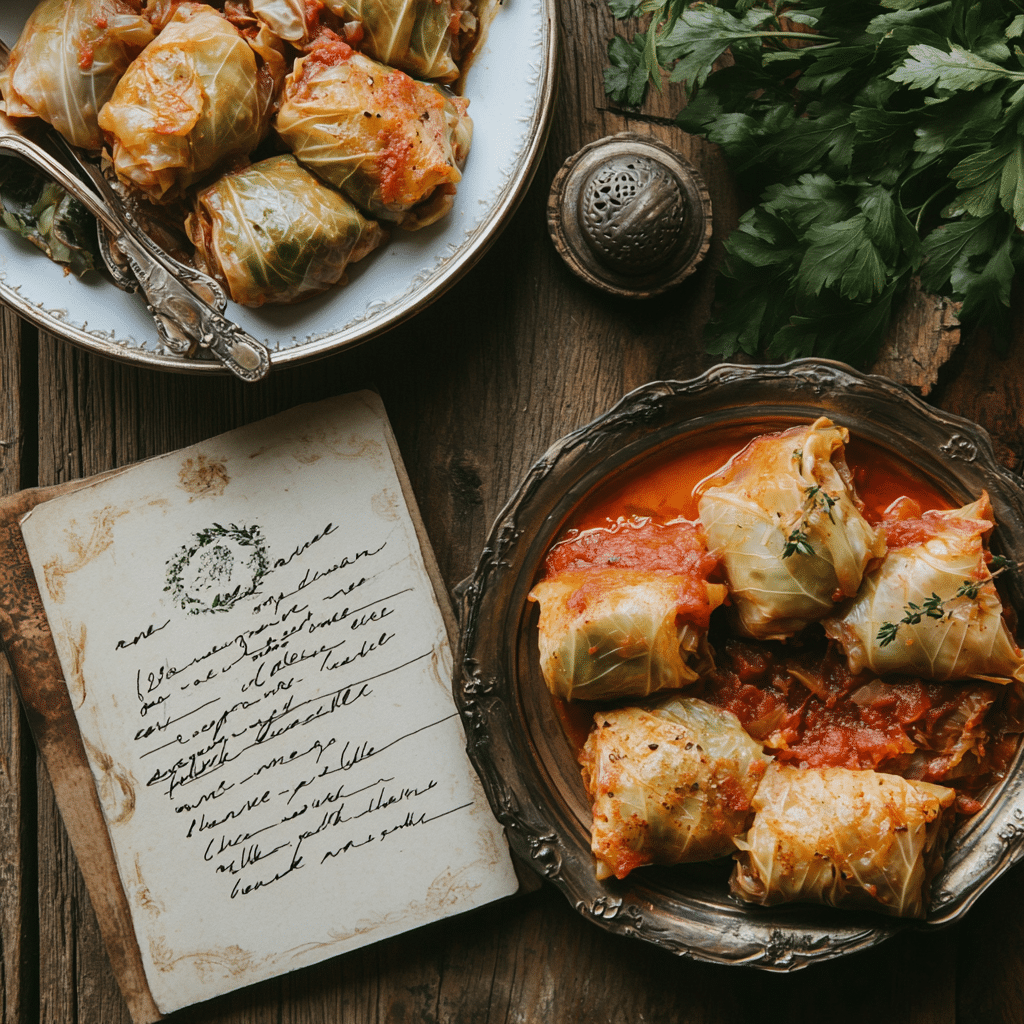
FAQs
What is the best way to roll cabbage rolls?
Start with softened cabbage leaves, place a small amount of filling near the stem end, fold in the sides, and roll up like a burrito. Tucking in the sides keeps the filling secure. If you’re worried about them opening, lay the rolls seam-side down or pack them tightly in your baking dish. Rolling cabbage rolls is all about gentle handling and firm folds.
How long do you cook a cabbage roll for?
Cabbage rolls are typically cooked for 60 to 75 minutes in the oven at 350°F. You can also slow cook them on low for 6–8 hours. Make sure they’re covered in sauce to prevent drying out. Whether baking or simmering, rolling cabbage rolls to a consistent size ensures even cooking.
Are cabbage rolls Turkish?
Yes, cabbage rolls exist in Turkish cuisine as lahana sarması. They’re usually meat-free and filled with seasoned rice, pine nuts, currants, and herbs. They’re one variation among many worldwide, proving how versatile rolling cabbage rolls can be.
What country are cabbage rolls from?
Cabbage rolls are made in many countries, including Poland, Ukraine, Romania, Turkey, and parts of the Middle East. Each region puts its own spin on the dish, but the tradition of rolling cabbage rolls with a flavorful filling is widely shared.
Conclusion
Rolling cabbage rolls might seem like an old-fashioned recipe, but it’s one that continues to bring people together—generation after generation. From the soft leaves to the rich filling, and that warm, saucy bake, everything about this dish speaks to tradition, comfort, and care.
Whether you’re trying your hand at rolling cabbage rolls for the first time or passing the skill down to your kids, it’s more than just a meal. It’s a moment in the kitchen. A story passed down. A way to feed not just your family, but your soul.




2 thoughts on “Rolling Cabbage Rolls Made Simple: A Heartfelt, Easy Guide for Home Cooks”